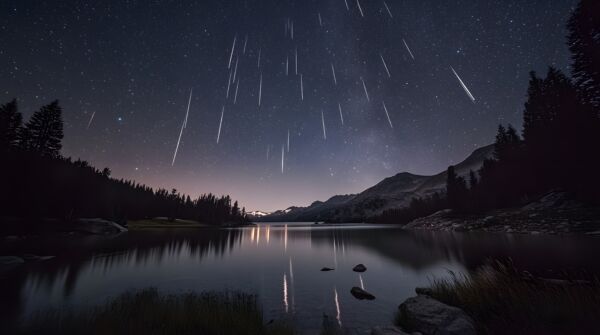Every day, 48.5 tons of meteoric material collide with Earth’s atmosphere. Almost all meteors burn up as they descend, with the fragments that successfully reach the Earth’s surface being known as meteorites. Some space rocks can be traced back to the early stages of our solar system, remaining relatively unchanged since their formation, providing clues about the formation environment of our sun and its planets.
Yet, until recently, scientists had only traced the sources of 6% of over 70,000 known meteorites back to the Moon, Mars, or Vesta (one of the largest asteroids in the solar system’s asteroid belt).
Now, an international team of experts has identified the sources of over 90% of known meteorites, revealing that a staggering 70% originate from just three asteroid families within the asteroid belt located between the orbits of Mars and Jupiter. Their research findings were published in three separate papers in the journals Astronomy & Astrophysics and Nature in September and October.
“For meteoritists, knowing which asteroid a meteorite sample came from is like finding a pot of gold at the end of the rainbow,” said Sara Russell, a planetary scientist at the Natural History Museum in London, as quoted by Science News, although she was not involved in this new study.
The team studied the composition of meteorites found on Earth and investigated the material of the major asteroid families within the asteroid belt through telescopic observations. They conducted modeling studies to understand the formation of these asteroid families.
“A family of asteroids is a group of asteroids that share similar orbits, as they are fragments produced in collisions between two parent asteroids,” noted Miroslav Brož, an astronomer at Charles University in the Czech Republic and a lead author of the two new studies, speaking to Reuters.
The three main asteroid families identified in the research are named Karin, Koronis, and Massalia, formed during collisions approximately 5.8 million, 7.5 million, and around 40 million years ago, respectively. These are relatively young compared to the estimated age of our solar system (around 4.6 billion years).
“Recent collision events in the asteroid belt have completely dominated the processes by which this material is delivered to our planet,” said Michaël Marsset, a researcher at the European Southern Observatory and a lead author of one of the new papers, speaking to Gizmodo. “You might expect the meteorite flux to be a mix of all the categories we observe in the asteroid belt, but it is actually dominated by these three recent fragmented asteroids.”
This is logical as the younger asteroid families contain more asteroid fragments due to their more recent formation, leading to collisions among the fragments and sometimes pushing them onto Earth’s orbit. Over tens of millions of years, the amount of debris in these clusters gradually diminishes.
Researchers found that Karin and Koronis families contribute a type of meteorite known as H Chondrites, constituting 33% of known Earth meteorites, while the Massalia family produces a type known as L chondrites, accounting for 37% of Earth’s meteorites.
In total, Chondrites (stony meteorites) make up 85% of meteorites found on Earth. As Trevor Ireland, a researcher at the University of Queensland in Australia, mentioned in an article on The Conversation website, these meteorites are of the rocky type, possessing distinctive rounded grains called chondrules and often containing olivine and pyroxene, silicate minerals considered fundamental components of our solar system.
“Meteorites are primitive rocks that have essentially retained their original composition since they formed in our protoplanetary disk,” Marsset told Reuters. The protoplanetary disk is a rotating gas and dust cloud around a star where planetary formation is believed to occur.
In other words, Chondrites are ideal meteorites for studying the origins of our solar system.
However, Russell expresses concern about the limited sample of Earth’s meteorites representing just a fraction of the entire material in the asteroid belt. She told Science News: “Perhaps we are only seeing a tiny part of the material in the asteroid belt.” Accessing a broader range of meteorite types could potentially offer more insights into the formation of the solar system.
Russell noted a potential but expensive solution: “We would have to go there with a space mission.”

